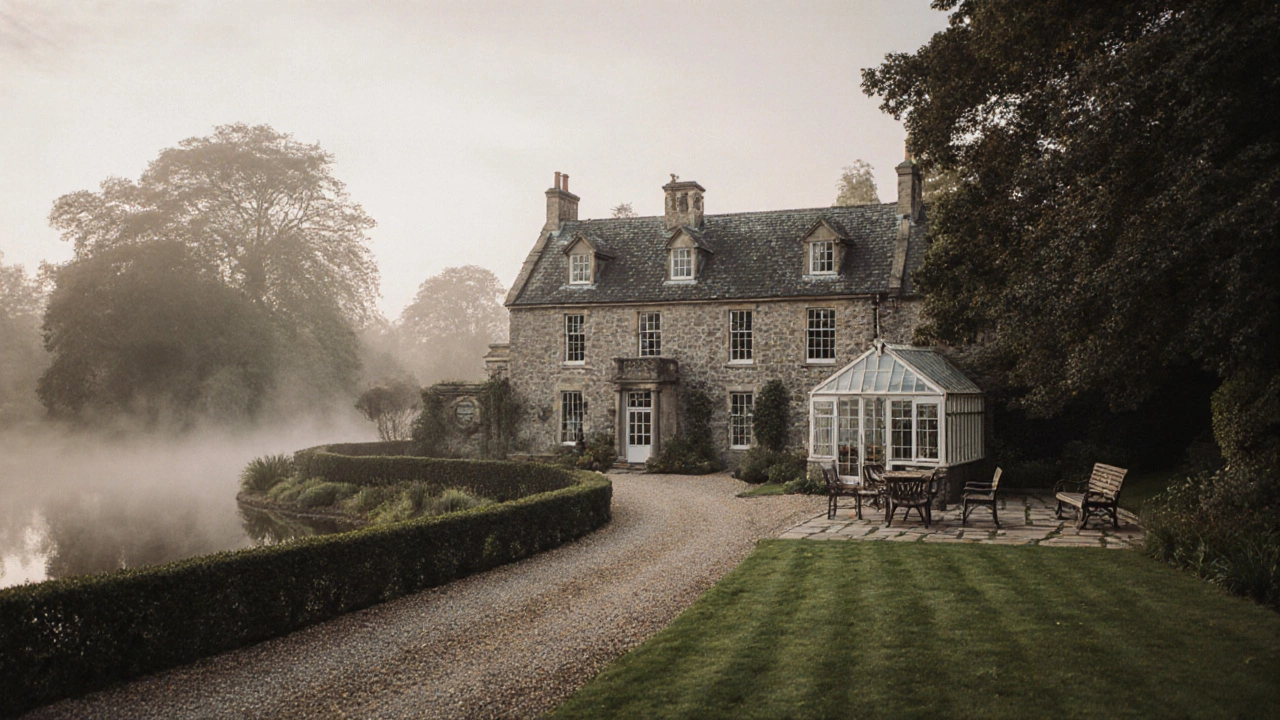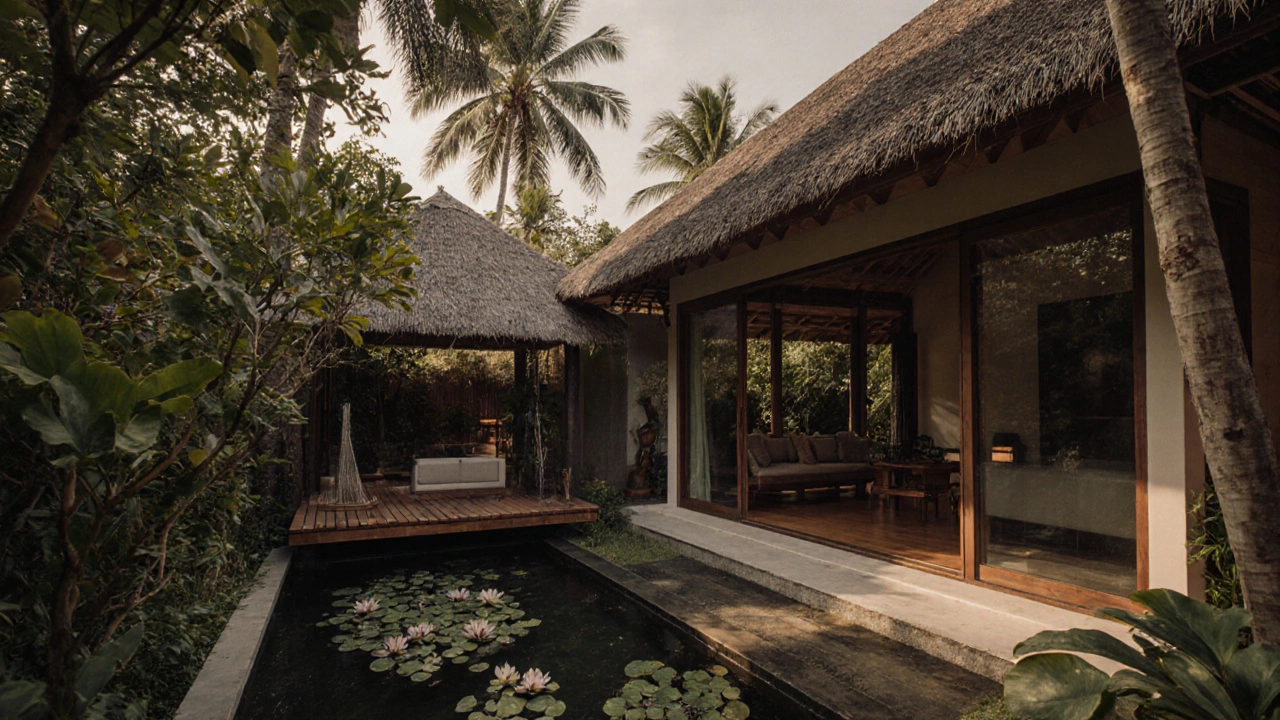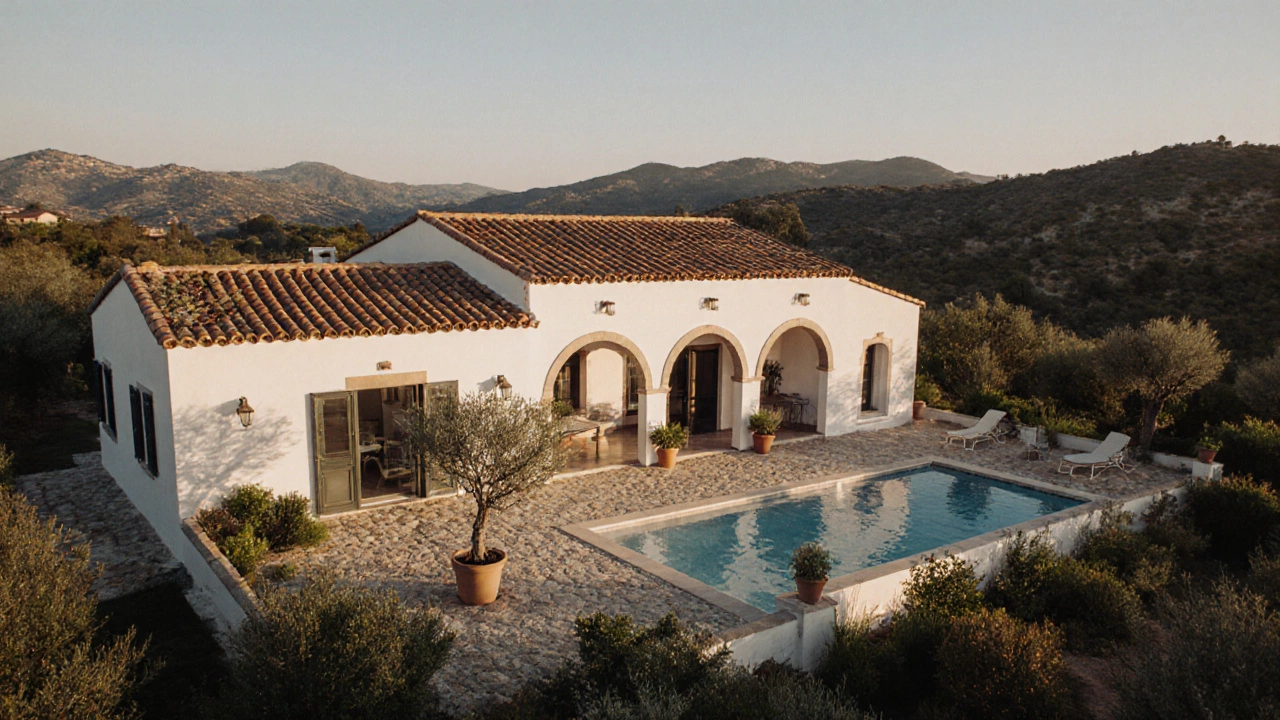When you hear the word villa, you might picture a sun-drenched pool, private gardens, and sweeping views. But not every large house is a villa. If you’re looking to buy one, you need to know what actually qualifies as a villa - not just in marketing brochures, but in real estate terms. There’s no single global law that defines a villa, but there are clear, consistent patterns used by builders, agents, and buyers worldwide. These aren’t just luxury add-ons; they’re the core criteria that separate a villa from a mansion, a country house, or even a big detached home.
It’s Not About Size - It’s About Layout and Privacy
A lot of people think a villa is just a big house. That’s a mistake. Some villas are modest in square footage, while some McMansions are way bigger but lack the defining traits. The real differentiator is how the space is arranged and how it connects to the land around it.
A true villa is designed as a self-contained unit. That means it’s not attached to any other dwelling. No shared walls. No common hallways. No neighbors above or below. It stands alone on its own plot. Even if it’s part of a gated community, each villa has its own boundaries, driveway, and private outdoor space. Think of it like a standalone cottage - but on a larger, more intentional scale.
In places like Spain, Italy, or the Mediterranean, villas often have a courtyard or internal garden. In the UK or US, they usually have a front yard, back garden, and sometimes side access. The key is that the property doesn’t feel like part of a row or complex. You walk out your front door and you’re not stepping into a shared corridor or facing another front door. That level of separation is non-negotiable.
Outdoor Space Is a Requirement, Not a Bonus
Here’s a simple test: if the property doesn’t have private outdoor space that’s part of the title, it’s not a villa. It doesn’t matter if it’s a tiny balcony or a 2-acre estate - the land must be legally tied to the house. This isn’t about having a garden you can see from the window. It’s about having land you own and control.
Most villas include at least one of these: a private pool, a terrace, a patio, a garden, or a courtyard. In warmer climates, the pool is common. In cooler regions like the UK, it’s more likely to be a landscaped garden with seating areas, maybe a greenhouse or shed. What matters is that the outdoor area is designed as an extension of the living space - not just a patch of grass.
Compare this to a detached house in a suburban development. It might have a garden, but it’s often small, functional, and not integrated into the home’s design. A villa’s outdoor space is planned from the ground up. Doors open directly onto patios. Bedrooms overlook terraces. The landscape isn’t an afterthought - it’s part of the architecture.
Architectural Style and Design Intent Matter
Villas aren’t built with the same template as standard homes. They’re designed with a specific aesthetic and lifestyle in mind. You’ll often see features like high ceilings, large windows, open-plan living areas, and natural materials - stone, wood, terracotta - that blend with the environment.
In Mediterranean regions, villas have whitewashed walls, tiled roofs, and shaded verandas. In Bali, they use thatched roofs and open-air bathrooms. In the UK, you might find a stone-built villa with sash windows and a slate roof. The style varies, but the intent doesn’t: to create a seamless connection between indoors and outdoors, and to offer a sense of calm, exclusivity, and permanence.
This is why you won’t find a villa that looks like a cookie-cutter 1980s suburban home. Even if it’s modern, it’s designed to feel unique. The layout often includes separate wings - maybe a guest suite, a home office, or a private study - that aren’t just extra rooms but intentional zones for relaxation or privacy.

It Has to Be a Primary Residence - or Designed to Be One
Some properties are marketed as villas because they’re big and expensive, but they’re really just holiday homes or second residences. That’s not the same thing. A true villa is built to be lived in full-time. It has all the systems of a primary home: full HVAC, reliable water pressure, proper insulation, modern plumbing, and enough bedrooms and bathrooms for daily living.
Compare that to a luxury holiday chalet. It might have a hot tub and a view, but it could lack a proper kitchen, laundry, or heating for winter. A villa doesn’t cut corners. Even in hot climates, it has insulation and ventilation systems that make it comfortable year-round. It’s built for routine, not just occasional use.
If you’re buying a villa as a permanent home, it should have a kitchen large enough for daily meals, a laundry room, and storage that actually works. If you’re buying it as an investment, it should still meet those standards - because tenants expect them. A villa that feels like a hotel suite isn’t a villa. It’s a rental with a fancy label.
Location and Setting Define the Experience
A villa doesn’t just sit on land - it belongs to its setting. It’s often found in areas that offer peace, natural beauty, or a sense of escape. That could mean hillside views, coastal access, countryside isolation, or even a quiet urban enclave with mature trees and low traffic.
In London, for example, villas are rare but exist in places like Hampstead, Richmond, or Kew. These aren’t in the city centre. They’re in leafy, low-density areas where the land is large enough to support a standalone home with privacy. In Spain, villas cluster near the coast but away from crowded resorts. In Tuscany, they’re nestled among olive groves.
The location isn’t just about scenery - it’s about lifestyle. A villa buyer isn’t just looking for space. They’re looking for quiet, security, and a sense of being removed from the everyday rush. That’s why gated communities with 24/7 security are common for villas. It’s not about being fancy - it’s about control over your environment.
Services and Amenities Are Built-In, Not Added On
Villas don’t rely on shared facilities like gyms or pools that you have to book. If there’s a pool, it’s yours. If there’s a home cinema, it’s in the house. If there’s a wine cellar or a sauna, it’s part of the structure.
This is different from a luxury apartment complex, where amenities are communal and often require fees or reservations. A villa gives you total control. You don’t need to ask permission to use the pool at 10 p.m. You don’t need to pay extra for parking. Everything is yours, included in the purchase.
That’s why villas often come with extra features like outdoor kitchens, fire pits, or even private tennis courts. These aren’t random luxuries - they’re part of the design philosophy. The home is meant to support a full life, not just sleep and eat.

What a Villa Is Not
Let’s clear up some common misunderstandings.
- A villa is not a large detached house in a suburban development - even if it’s called one in the listing.
- A villa is not a holiday rental with a fancy name - if it’s only rented out, it’s not a true villa.
- A villa is not a townhouse or semi-detached property - shared walls disqualify it.
- A villa is not a mansion built for show - if it lacks livability, it’s just a showpiece.
Real estate agents sometimes use the word “villa” to make a property sound more desirable. But if it doesn’t meet the criteria above - standalone, private outdoor space, intentional design, full-time livability - then it’s misleading. You’re paying for a lifestyle, not just square footage.
How to Spot a Real Villa When You’re Buying
If you’re looking to buy, here’s a quick checklist:
- Is the property completely detached? No shared walls, no common areas.
- Does the land title include private outdoor space? (Check the deed or survey.)
- Is the layout designed for daily living, not just entertaining?
- Are the materials and architecture consistent with traditional villa styles?
- Is the location quiet, private, and integrated with nature or landscape?
- Does it have permanent, built-in amenities - not shared ones?
If you can answer yes to all six, you’re looking at a real villa. If any are no, ask why it’s being called one. The answer might save you thousands.
Why This Matters for Buyers and Investors
Understanding villa criteria isn’t just about avoiding hype - it’s about value. A true villa holds its value better than a generic large house. It appeals to a specific, high-demand buyer: someone who wants privacy, space, and design without sacrificing comfort. That’s why villas often sell faster and at a premium, even in slower markets.
For investors, a villa that meets these standards attracts long-term tenants willing to pay more. For families, it means room to grow without feeling crowded. For retirees, it means independence without isolation.
At the end of the day, a villa isn’t a house with a fancy name. It’s a carefully crafted way of living. And if you’re paying for that, you deserve to know exactly what you’re getting.

